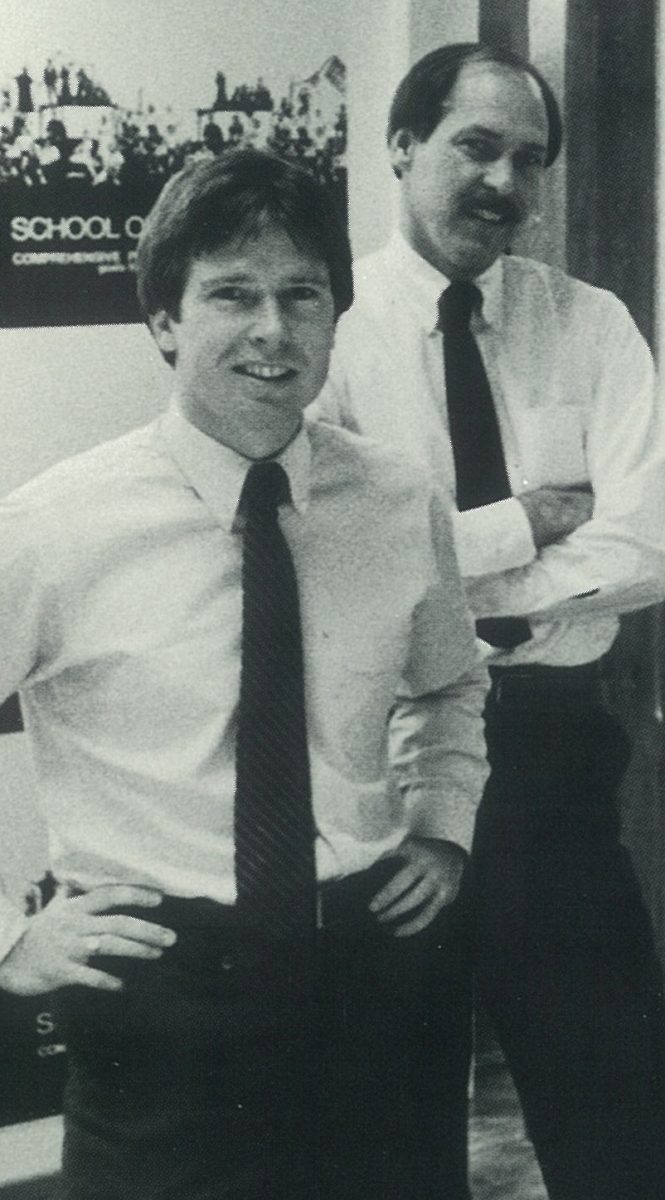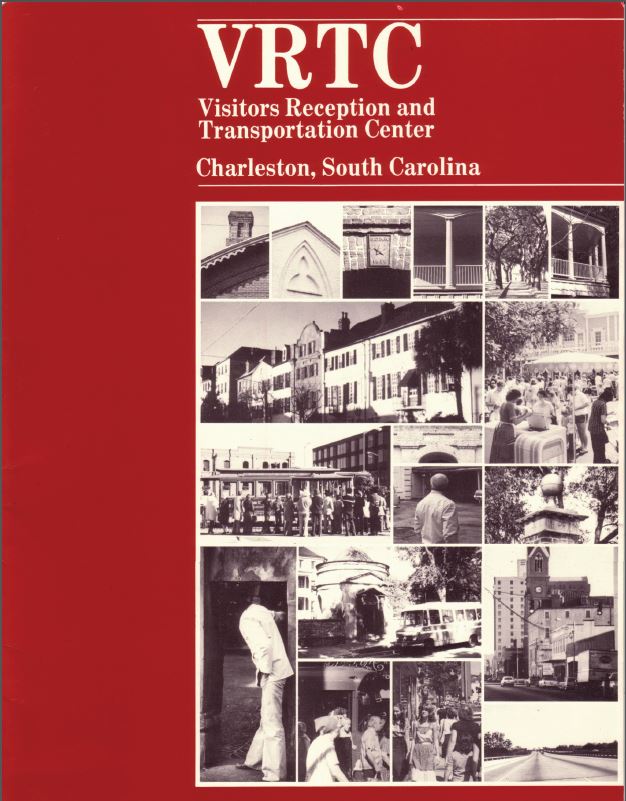Charlotte loses a visionary in Ron Morgan

In August 1974, I was a rising junior in the College of Architecture at UNC Charlotte, and I had returned to school early to take advantage of the woodworking shop. One day, covered in dust, I passed one of the seminar rooms and noticed a good number of faculty as well as the dean had assembled. Without invitation, I went in and took a seat. Before me was this incredibly charismatic man with not one but two slide projectors, talking about architecture in terms of environmental and social responsibility, of historical meaning and collective memory. He was speaking not about buildings but city building, through analogy and storytelling. I was spellbound. Having grown up in the simple mill-town world of Gastonia, Ron’s perspective of society and the place of architecture within it hit me like a bolt of lightning.
Afterward, I boldly and naively went up to the Dean, Robert Andersen, and insisted he bring this fellow to UNC Charlotte. Bob simply smiled. Only later did I learn he had sought out Ron, his student at the University of Southern California, to help him in forming what was then an incomplete college of architecture.
I had no idea Ron Morgan would make such an impact upon my life, those of many others, and indeed the trajectory of physical form and civic life in Charlotte and the region. His death May 30 leaves a hole in the civic fabric.
Charlotte in the early 1970s was reeling from the great social changes of the 1960s: school integration, civil rights, urban renewal that destroyed African-American neighborhoods and propelled “white flight.” Cracks were showing in what we then called downtown. New malls were robbing the center city of its retail life, following the abandonment of downtown as a place to live – unless, of course, you were living in the public housing of First Ward, in the then-abandoned structures of Fourth Ward, or on the street.

Terry Shook, left, with Ron Morgan, when Shook worked at Dalton Morgan & Partners. Photo courtesy Terry Shook
But Charlotte, true to its roots, was a place of great entrepreneurship and was accepting of new people and ideas. Into that world Ron inserted himself and made known his view of a New South—an urban one grounded in fairness and a convivial and shared civic life. In 1975 Ron led a public and open design charrette (at least 10 years before that term and process were widely used in planning). That week-long rediscovery of a forgotten neighborhood resulted in a host of public, private and nonprofit initiatives that created today’s Fourth Ward.
A year later, Ron learned of the city’s effort to create a children’s museum and the likelihood that it would follow downtown’s retail to the SouthPark mall area. Alarmed, Ron recruited me and fellow student Graham Adams – on the eve of spring break – to help him promote his bold idea: Place the museum downtown, across from the soon-to-be Spirit Square in the former First Baptist Church (which Graham and I had had a hand in saving from the wrecking ball the year before.). An intense week of work ensued. Who needs to go the beach to have fun when a genius calls? The rest is history, and part of that history involved Ron’s indefatigable effort on behalf of the bond campaign to fund what is now Discovery Place.
Those were significant events in the life of Charlotte and the greater region. But they were only the start. No longer content with being a university professor, Ron began a career as a practicing architect. Here are a few of his accomplishments:
- The public process that spurred creation of a park and development along the Reedy River in downtown Greenville, S.C. In 1979 the area was all but an open sewer. Ron was among the first to see the potential of a new riverfront park hosting new office, retail, hotels, civic places and housing. Today, such a place virtually defines Greenville, now hailed as one of America’s greatest small cities.
- The non-standard design of a public elementary school in First Ward, one that would inspire learning and set a new, uplifting tone for the center city.
- The master plan for the North Carolina School of Science and Mathematics in Durham – a new type of school that demanded unconventional thinking.
Of all his projects, the one that stands out for me was the way Ron orchestrated the public vision process and master plan for the Visitor Reception and Transportation Center in Charleston. This came at a time when the planned next-door convention center and hotel complex — a separate project – caused such a public uproar that a legal challenge went all the way to the U.S Supreme Court. He and I often walked into rooms filled with the other project’s plaintiffs, and thick with tension. His commanding presence, his cock of the head and his engaging smile eventually would calm the room. Ron’s ability to listen to people, to take divergent views and to create synchronicity out of chaos was masterfully shown. Instead of lawsuits, there were accolades, including an Award from the National Endowment for the Humanities.
Booklet for the Charleston Visitor Reception and Transportation Center in Charleston. Click image to see full booklet.
He championed many initiatives on the pages of the Charlotte Observer, where he painted both visual and word pictures, helping readers see his imagined future. Nascent hints of the future success of South End can be found in Ron’s writings. However, Ron became disenchanted with architectural practice, even when practiced in his nontraditional manner. He became a real estate developer, to make things happen now. Blazing trails in this realm of legal and financial complexity proved to be challenging for an idealist Ron. Still, there are projects he developed here and across the region that at the time may have been on the leading edge but are now beloved and are considered benchmarks for urban development.
Ron was, indeed, a visionary – a dreamer, a soothsayer for a better life lived not only through design but, even more so, through civil discourse about our differences and our shared aspirations. For Ron, creating a new world was always a team activity. To be a participant of an idea-generating process led by Ron – a new building, a city master plan, or an idea as big as society itself – was to be in a zone where all good things were on the table. New perspectives were explored, and seemingly random ideas were connected in unconventional but meaningful ways, leaving all involved with a renewed sense of the possible. So optimistic was he that a client once remarked that Ron always has his feet firmly planted in mid-air. He was instrumental in the Queen City Congress, a forum to give neighborhoods a voice in the life of the city. He ran for mayor promoting those virtues. Many know of his recent gifts of insight, energy, talent – indeed, his very lifeblood – though the 100 Gardens project and his work in Haiti. There are writings yet to be published that I am sure will affect future generations. Such was his transcendent nature.
I am grateful for the 43 years he was a part of my life, as my mentor, one time business partner and friend. In large measure I owe my view of the world and of my profession to him. In reflecting on those years now past, I recalled how much Ron valued the writings of the Jesuit priest, Pierre Teilhard de Chardin. I found this quote that, for me, captures Ron:
“Someday, after mastering the winds, the waves, the tides and gravity, we shall harness for God the energies of love, and then, for a second time in the history of the world, man will have discovered fire.”
Ron, indeed, touched that fire. May his manifest goodness live through us and through our communities for long into the future.
Terry Shook, FAIA, is a founding partner of Shook Kelley, a firm specializing in strategic consulting services in disciplines of consumer psychographics and brand development through urban planning, architecture and communication design, all focusing on how places and spaces convene people in meaningful ways. He graduated cum laude in 1976 from the UNC Charlotte College of Architecture.
Views expressed in this commentary are those of the author and do not necessarily represent the views of the UNC Charlotte Urban Institute, its staff, or the University of North Carolina at Charlotte.
